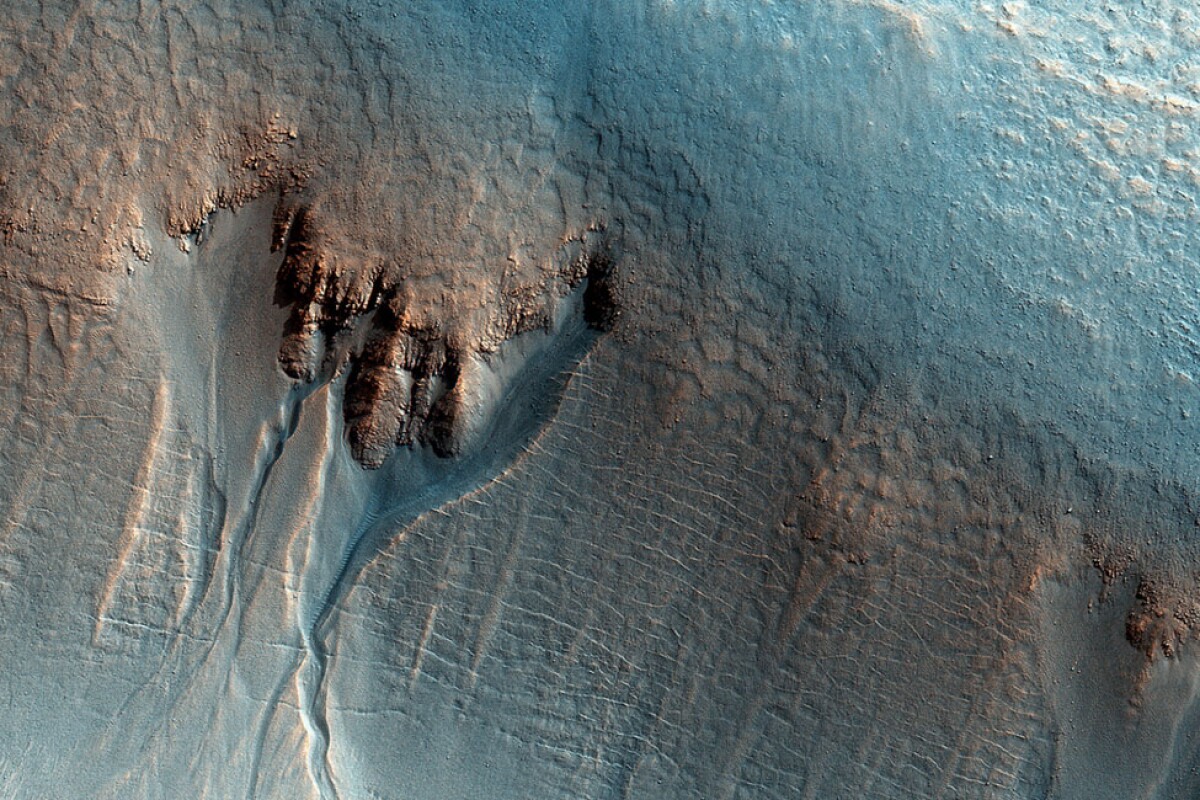In the mid-northern latitudes on Mars, a large flat area exists called Utopia Planitia, which roughly translates as "plains of paradise." Unlike the lush areas we might consider paradisiacal here on Earth, this region of Mars consists of cracked and pitted red dirt – more a desert than a delight. Thanks to a new discovery though, the area could one day be a paradise indeed for astronauts landing on the planet, as all that barren regolith hides a frozen lake beneath that holds as much water as Lake Superior, the largest of North America's Great Lakes.
The discovery of the buried and frozen water was made through the use of the ground-penetrating Shallow Radar instrument (SHARAD) on board NASA's Mars Reconnaissance Orbiter (MRO). The MRO arrived in orbit around Mars in 2006 and began its primary science mission of observing the Red Planet from orbit 10 years ago this month.
The frozen water deposit is found roughly halfway between the Martian equator and its north pole and it "ranges in thickness from about 260 ft (80 m) to about 560 ft (170 m), with a composition that's 50 to 85 percent water ice, mixed with dust or larger rocky particles," according to NASA. It is covered by soil measuring about 3-33 ft (1-10 m) thick. That soil has protected the ice from subliming – turn straight from a solid to a gas – as occurs with Martian ice that's exposed to the atmosphere.
While the newly discovered deposit only represents less than one percent of all known water ice on Mars, it's still a significant finding because of its position on the planet and its location relatively near the surface.
"This deposit is probably more accessible than most water ice on Mars, because it is at a relatively low latitude and it lies in a flat, smooth area where landing a spacecraft would be easier than at some of the other areas with buried ice," said Jack Holt of the University of Texas, a co-author of a paper describing the findings in the journal Geophysical Research Letters.
Another paper co-author, Gordon Osinski from Canada's Western University in Ontario, was inspired to turn the SHARAD instrument on the Utopia Planitia because certain features it contained, such as polygonal cracking, were similar to landforms in the Canadian Arctic beneath which frozen ice is found. Data from over 600 overhead passes with SHARAD were used in the determination of the frozen underground Martian lake.

In addition to serving as a potential resource for future explorers, researchers are also eager to get their hands on samples of the ice to find out what it could reveal about the changing role of water on Mars as the planet's climate changed over thousands of years.
"The ice deposits in Utopia Planitia aren't just an exploration resource, they're also one of the most accessible climate change records on Mars," said another study co-author, Joe Levy of the University of Texas. "We don't understand fully why ice has built up in some areas of the Martian surface and not in others. Sampling and using this ice with a future mission could help keep astronauts alive, while also helping them unlock the secrets of Martian ice ages."
Source: Jet Propulsion Laboratory






